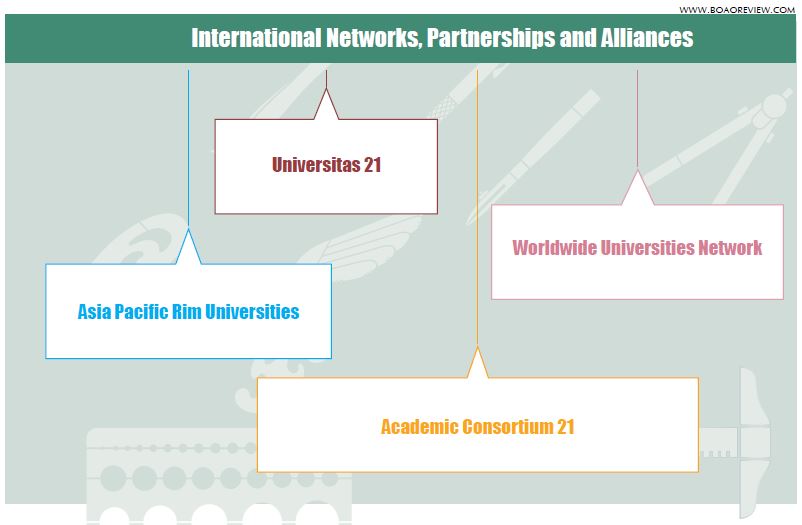
The following article appeared in the January 2013 issue of the Boao Review and was written by Professor John Hearn.
It is a time of turbulence for higher education and research around the world. The effects of the global financial crisis continue, with reductions in resources from all sides. In contrast, the demand for higher education increases, with international student mobility likely to double according to the OECD. For research intensive universities, there are great challenges in maintaining quality and competitiveness, the cost of which increases constantly. In teaching and learning, new methods and technologies are also more costly. There is also a shortage of talent and availability of senior, experienced academics and research leaders, while conversely there is unemployment among new graduates as the generational transition is postponed along with retirement.
Other factors to be added include the role and influence of the international university rankings, which at best can give a superficial view and benchmark of key indicators, usually of questionable validity; and at worst can damage cultural diversity and national identities by forcing very different universities into an assessment resulting in a linear list. But governments, universities, academics, students and parents are all now imprinted with the rankings as they move towards decisions on careers and degrees. The rankings are here to stay, but they must also reform to provide a more fundamental assessment of options and choices.
Responses to challenges for higher education around the world
There are of course great variations in international and national strategies for higher education and research. At one extreme, China has constantly reaffirmed its commitment in policy and practical financial terms to building a number of world universities. China has developed a rich policy framework, nested under the national five year plans, and including detailed targets for higher education, science and technology, university development and the recent 2011 plan for partnership between government, university and business that includes a strong encouragement for international partnership as well.
Sweden has committed to quality research in areas of national advantage and also to achieving 60% of the population entering higher education fully funded by the public purse. Other established economies including the UK and USA are experiencing serious difficulties. In the UK the response has been to almost double university fees, linking these to direct student loans (and debts) in the US, many state universities are seeing reductions of up to 30% in their education budgets, while private universities are less effected but are seeing challenging conditions for philanthropy. In Australia were the economy is linked to that of China both in the extraction of natural resources, the export industry of education, and in tourism, a more stable economic climate has led so far to the maintenance of government support in higher education and research.
Among all these challenges, the leaders of international research universities know that fundamental reform will be necessary in order to remain competitive, self sufficient and sustainable. A major factor in building quality and performance is the development of clear strategies that prioritise strengths, diminish or eliminate weaknesses, and retain the fundamentals in the delivery of education, research and internationalization. If one were to download the strategic plans of the top 50 research universities from around the world, there would be a high incidence of similarity.
An emerging factor in such an environment is the development of international networks, partnerships and alliances. Over the past ten years in particular, over 100 networks have developed, each with strategic goals in aspects of research and education, mobility and resources. Some networks have local or regional ambition, while others are truly global. The advantages of such networks are that they enable peers to meet, gain intelligence of shared opportunities and challenges, benchmark in essential indicators for innovation and implementation of their strategic plans, and sometimes cooperate on division of labor and teamwork in the attraction of resources. At the international level networks such as the Worldwide Universities Network, the Asia Pacific Rim Universities, Universitas 21 and Academic Consortium 21 are examples, each approaching their specific objectives in different ways. In this communication, I will focus on the Worldwide Universities Network, and its exciting role in international teamwork.
The Worldwide Universities Network as a case in point
The Worldwide Universities Network (WUN) is ten years old and committed to teamwork in addressing four major global challenges. These are climate change and food security; public health in non-communicable disease; reform of higher education and research; and cultural understanding in international relations and development. The network currently has 18 members from 6 continents, 4 global challenges with 85 interdisciplinary research groups. There is a strong system of governance, quality review and strategic development. In addition to the research priorities, WUN serves as an instrument for international engagement and internationalisation of its partners. A high priority is to enhance international experience for researchers and teachers, especially emerging academics. The network also develops a team approach with governments, international agencies, business and alumni in forming teams to address the global challenges; and in developing bids for resources such as grants, scholarships and talent.
Looking to the future, there are significant opportunities for organic growth and further engagement. WUN has an inclusive approach to teamwork, based on the “WUN Plus” concept whereby any relevant university or researcher can join a project team. There are virtual seminars and workshops, well attended at no matter what time of day or night. There are also several new dimensions of the existing global challenges that can be developed, such as energy and water security, health literacy and communication, education and talent pathways, and the two-way understanding of China and the world. Increasingly, a global network can also bring value to evidence based policy options, and reform that can profit from a comparative, global experience. A further example would be the concept and vision of the WUN Passport, which encourages mobility between preferred partners in order to create opportunities for the constituents.
A regular feature of WUN is international conferences in the areas of the four global challenges that cover cutting edge research as well as the potential impacts on policy and practice. These forums for frontline discussion and strategic development can also be held in conjunction with major international societies. Follow up workshops to establish new partnerships and programs are the norm.
One example of such a forum was the WUN Presidents Forum on the Reform of Higher Education to 2020, held in Shanghai in 2011. The focus was on the key drivers that would affect higher education reform over this period. The topics included: the war for talent, privatization of universities, interdisciplinarity of research, the student experience along with reform of curriculum, teaching and learning, and an international dimension to all aspects of university development to meet the needs staff and students in the future. Further issues that were seen as high priority were the transfer and commercialisation of knowledge, the central role of the universities in community and the shaping of society for the future.
Prosperity of international cooperation and respect for national identities
These days the sun never sets on higher education and research conferences. In each of these regional or global meetings, similar issues and debates take place. The same is true for discussions and contributions from international agencies and foundations, for example the OECD, World Bank, World Health Organization, and many others. Once again, many of the issues raised are global challenges, and these take the pooled strengths and knowledge of universities working as an international team in developing practical approaches. Such international cooperation has been going along for a very long time at the level of the individual researcher or educator, but the larger critical mass that is afforded through institutional engagement and endorsement brings greater power and impact to the results.
An important dimension to this development is the way that education and research can be transformative in skills and jobs, frameworks such as the millennium goals, and the acceleration of economic development. This is true for established economies, many now going through seismic fiscal shocks, and even more true for emerging and developing economies, where teamwork and knowledge partnership is probably an essential component for survival in avoiding widening knowledge and economic gaps.
In conclusion, the future of higher education and research will require fundamental reforms at all levels to deal with the new paradigms of global development. There must be a focus on international excellence and best practice, while respecting the national identities and cultures that have arisen from history and are vital to national and international life. A balance between such diversity and the key attributes of whole of life learning and development from graduation through career, requires an open international debate and pooling of ideas. We are still not very good at really understanding the way of thinking and approaches of other cultures, tending to think that our own way is best or perhaps the only likely road to success. While there are many, complex challenges facing society, and even more challenges at a time of turbulence and diminishing resources in health, environment and economic growth, the role of networks such as the Worldwide Universities Network provides a way to work together, understand each other, and deliver results.
Professor John Hearn is Executive Director of the Worldwide Universities Network (WUN), Co-chair of the Australia Africa Universities Network (AAUN) and Professor of Physiology at the University of Sydney Medical School.
